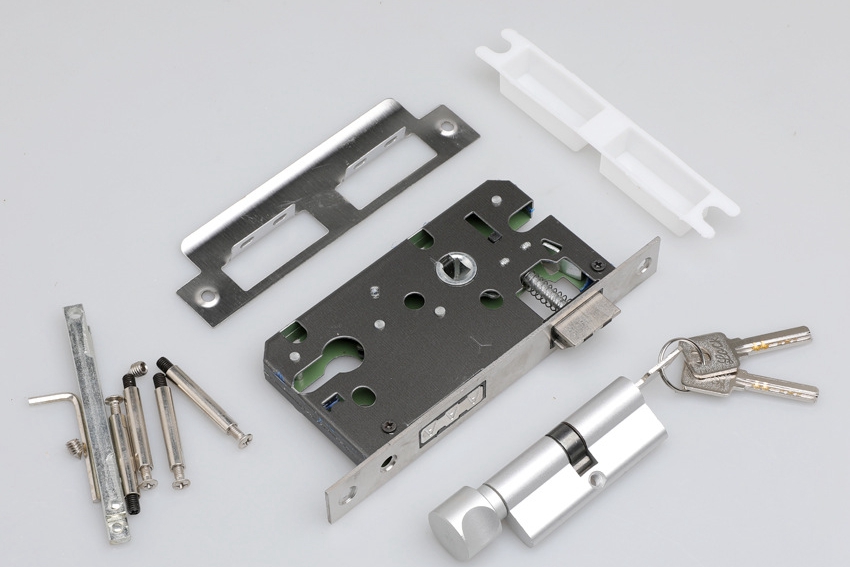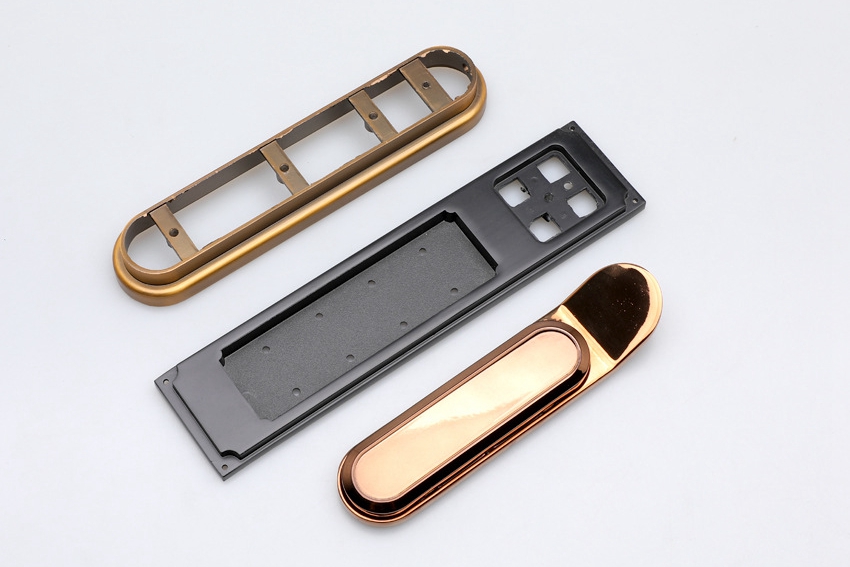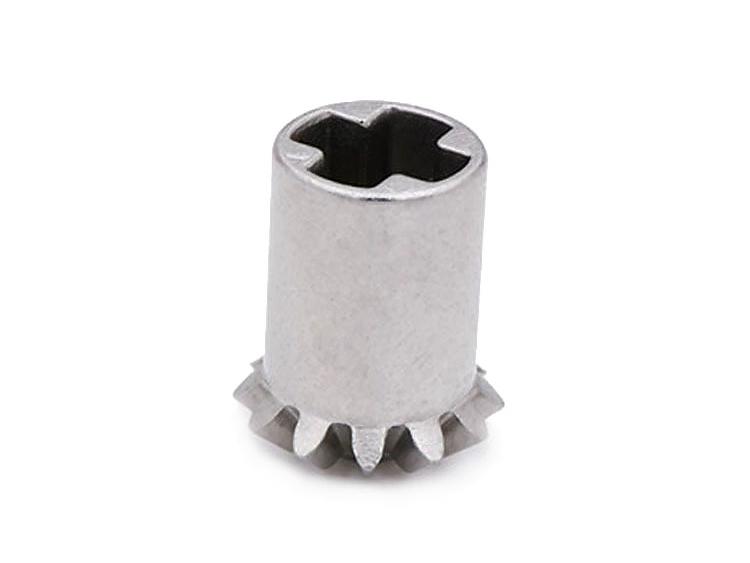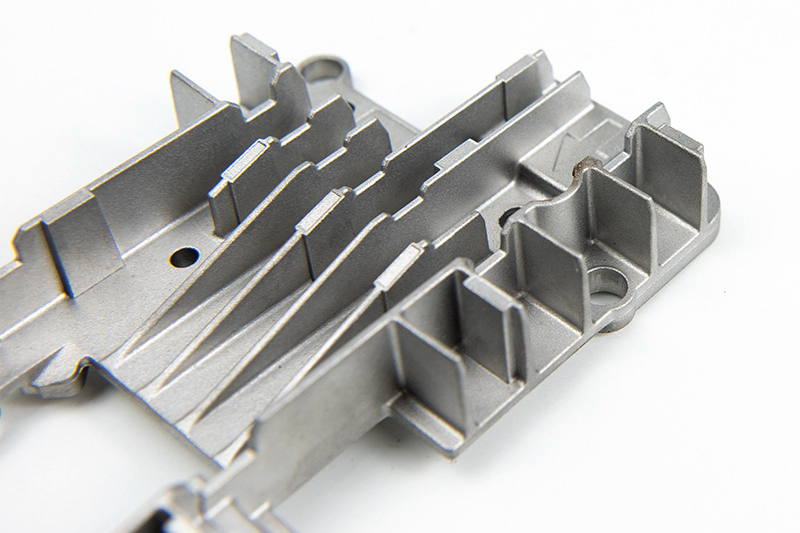High-Precision Lock Mechanism Manufacturing Solutions
In modern security systems, the reliability of a lock directly depends on the precision of its internal mechanisms during manufacturing. Micron-level dimensional deviations may lead to reduced resistance against technical unlocking, rough operation, or even premature failure. As Neway’s engineering team, we fully understand the intrinsic link between precision and security. Through advanced manufacturing technologies and strict quality control, we provide trusted high-precision solutions for lock manufacturers worldwide. Every precision lock component carries a commitment to security, and fulfilling this commitment requires relentless pursuit of manufacturing excellence.
Core Manufacturing Technologies for Achieving Micron-Level Precision
Multi-Axis Precision CNC Machining: Guaranteeing Complex Contours and Extreme Tolerances
In the field of multi-axis precision machining, CNC machining prototyping provides unparalleled capabilities for high-precision lock mechanisms. Five-axis machining centers can complete multi-face machining of complex contours in a single setup, ensuring optimal fit between lock cylinders, wafers, and transmission components. Our precision machining equipment can achieve dimensional tolerances of ±0.005mm and surface roughness as low as Ra0.4. This level of precision ensures smooth operation of moving parts while effectively preventing technical probing of internal structures. For precision components used in high-security locks, CNC machining provides irreplaceable assurance of accuracy.
Metal Injection Molding (MIM): Precision and Efficiency for Mass-Produced Complex Small Components
When facing mass production of complex miniature components, Metal Injection Molding (MIM) services demonstrate outstanding technical advantages. This process is particularly suitable for manufacturing lock pins, micro gears, and ratchets with complex three-dimensional structures, enabling geometries that are difficult to achieve using conventional machining. MIM can achieve forming tolerances of up to ±0.3%, with a product density above 96% and mechanical properties that are close to those of forged parts. In large-scale production, MIM ensures high consistency of every component, which is critical for interchangeability and reliability in lock systems.
Precision Stamping and Forming: Efficient Production of Thin-Walled and High-Strength Structural Parts
Thin-walled components such as springs, retaining rings, and contact plates in locks require specialized manufacturing processes. Sheet metal stamping utilizes precision dies and automated equipment to produce high-precision, thin-walled parts at a high speed. Our multi-station progressive dies can achieve production rates of hundreds of parts per minute while maintaining dimensional accuracy within ±0.05mm. Precision-stamped parts provide excellent elasticity and fatigue strength, ensuring stable performance of lock mechanisms over long-term use.
Powder Compaction Molding (PCM): Solutions for Wear-Resistant and Special-Function Components
For lock components with special performance requirements, Powder Compaction Molding (PCM) services provide a unique solution. PCM enables the production of parts with controlled porosity, where micro-pores can store lubricating oil to achieve self-lubricating performance and significantly reduce wear on moving components. Through precise control of material formulations, we can manufacture lock components with high wear resistance, specific magnetic properties, or tailored electrical characteristics. This process is particularly suitable for bearing sleeves, guides, and other functional elements that require special properties in lock mechanisms.
Precision Post-Processing Technologies Ensuring Performance and Durability
Precision-formed components require professional post-processing to achieve optimal performance. Heat treatment processes adjust the crystalline structure of materials through controlled heating and cooling, enabling lock components to obtain the required hardness, strength, and toughness. Depending on material type and application, we apply quenching, tempering, carburizing, and other methods to ensure each part maintains sufficient hardness while retaining appropriate toughness, preventing brittle fracture. For precision components requiring ultra-smooth surfaces, electropolishing removes microscopic burrs, reduces surface roughness, and lowers friction and wear on moving parts. Tumbling is suitable for batch processing of small components, gently deburring while creating a uniform surface sheen.
Key Material Selections for High-Precision Lock Components
High Dimensional Stability Stainless Steels and Alloy Steels
Material selection has a direct impact on the dimensional stability and service life of lock components. Stainless steels are the preferred choice for high-precision locks due to their excellent corrosion resistance and strength. Martensitic stainless steels, such as 420 and 440C, can achieve hardness levels of HRc 50–55 through proper heat treatment while maintaining sufficient toughness. For applications requiring even higher strength, low alloy steels such as 4140 and 4340 can be quenched and tempered to deliver outstanding mechanical properties. These materials exhibit excellent dimensional stability, ensuring precision is maintained throughout long-term service.
Wear-Resistant Copper Alloys and Special Materials
For applications requiring low friction and high wear resistance, copper alloys provide ideal solutions. Bronze, brass, and other copper-based alloys possess self-lubricating characteristics that help reduce friction coefficients and prevent sticking in moving parts. These materials also offer good thermal conductivity and corrosion resistance, making them particularly suitable for lock cylinders, keys, and other high-wear components. Copper alloys machine well, allowing for the creation of complex geometries and tight tolerances that meet the requirements of high-precision lock manufacturing.
High-Performance Engineering Plastics and Ceramics
With advancements in material science, POM, featuring low friction, high wear resistance, and good dimensional stability, is increasingly replacing certain metal components in lock manufacturing. This engineering plastic is suitable for gears, sliders, and bushings, effectively reducing operating noise and improving smoothness. For special applications requiring extreme wear and corrosion resistance, zirconia ceramic components deliver performance that surpasses that of traditional materials. The exceptional hardness and chemical inertness of ceramics make them an ideal choice for high-security locks, especially for long-term use in harsh environments.
Applications of High-Precision Mechanisms in Various Lock Solutions
Precision Core of Mechanical Lock Cylinders and Key Systems
The security performance of mechanical locks depends entirely on the machining quality of their precision mechanisms. Our locking system solutions cover a wide range of products from traditional pin tumbler locks to advanced wafer locks. Each pin hole, wafer slot, and profile in the lock cylinder requires micron-level machining precision to ensure only properly matched keys can operate smoothly. Precisely controlled clearances prevent technical opening methods such as vibration and probing, while providing a refined operating feel. For high-security locks, we adopt specialized machining processes and tolerance control measures to achieve top-tier resistance against technical attacks.
Actuation Mechanisms in Smart and Mechatronic Locks
Modern smart locks integrate mechanical precision with electronic control, imposing even higher precision requirements on their actuation mechanisms. Key components, such as motor-driven gearboxes, screw drive systems, and electromagnetic clutches, require strict dimensional control and appropriate material selection. Through precision manufacturing, we ensure these components operate with noise levels below 45 dB and lifetimes exceeding 100,000 cycles. High-precision transmission mechanisms guarantee accurate extension and retraction of the latch, preventing failures caused by positional deviation. Mechanical–electronic interface components in smart locks require special precision considerations to ensure long-term stable performance.
Precision Structures for High-Security Specialty Locks
Specialty locks used in bank vaults, safes, and other high-security environments impose extremely stringent requirements on manufacturing precision. These locks typically integrate multi-factor protection, including mechanical combinations, electronic identification, and physical safeguards. The precision components we supply for such applications include accurately positioned dials, lock bolts with tolerances within 0.01mm, and safety mechanisms made from special alloys. Every part undergoes 100% dimensional inspection and functional testing to ensure reliable performance under extreme conditions. Manufacturing such specialty locks often requires the integration of multiple processing technologies; through process innovation and strict quality control, we meet the demanding requirements of these critical applications.
Four Engineering Pillars for Successful High-Precision Lock Mechanism Development
The successful development of high-precision lock mechanisms is built upon four key engineering pillars. Design for Manufacturability (DFM) requires consideration of process feasibility and cost-effectiveness from the product design stage, reducing manufacturing difficulty and cost through structural optimization. Tolerance analysis and fit design ensure that all components function as intended after assembly, with statistical tolerance analysis used to predict the overall product yield. The coordinated selection of materials and processes must consider performance requirements, production volume, and economic factors to identify the optimal solution. End-to-end quality monitoring and measurement, supported by advanced inspection equipment and robust quality systems, ensure every manufacturing stage remains under control. Together, these principles form a solid foundation for the success of high-precision lock products.
Conclusion: Partnering with Precision Manufacturing Experts to Achieve Flawless Security Performance
The manufacturing of high-precision lock mechanisms is a systematic engineering endeavor involving the integrated application of multiple processing technologies and stringent quality control. From material selection and process definition to machining, post-processing, and final verification, every stage requires professional expertise and extensive experience. Leveraging its technical strengths in multi-material forming and precision manufacturing, Neway provides comprehensive solutions for lock manufacturers, from concept design to mass production. We are committed to technological innovation and uncompromising quality, working with our customers to create safer, more reliable, and more durable lock products that provide robust protection for people’s lives and property.
FAQ
Which precision factors are most vital to prevent technical lock manipulation?
How to ensure consistency across tens of thousands of lock parts in production?
For smart lock transmissions, are metal or engineering plastics more reliable?
Which surface treatments best reduce friction and wear in moving lock parts?
What is the typical development process from prototype to mass lock production?




